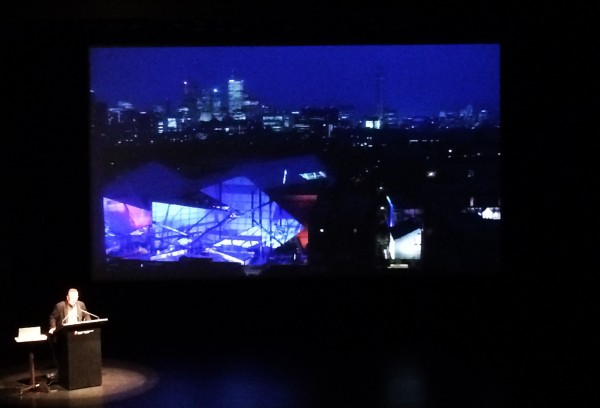Tuesday night marked the third address in Carleton University’s 2014/2015 Azrieli School of Architecture & Urbanism Forum Lecture Series, with the night’s talk being delivered by Michael McClelland, founding partner of ERA Architects Inc., located in Toronto. The firm is most notably recognized for its work in heritage conservation, landscape architecture, urban design and cultural planning.
The lecture, entitled ‘Architecture and Value’, discussed values-based heritage design, with McClelland examining the design history of the Royal Ontario Museum (ROM) and Art Gallery of Ontario (AGO) in regards to how, and why, certain buildings retain value. He reviewed the key architectural drawings of both buildings, noting how value is a changing concept and identified how the recent and sometimes-controversial renovations to the ROM and AGO by Daniel Libeskind and Frank Gehry, respectively, can be seen as following the requirements of the contemporary institution. The media may not have originally welcomed these unique designs, however, as societal values change so to may our perception of the built work.
Following this, McClelland next examined the role of the architect in creating and maintaining this value. For him and ERA Architects, there is an interest in uncovering the value in spaces currently being undervalued by society. McClelland presented several research projects that the office has recently done or that are curently on-going. For example, Found Toronto was an exhibit presented in 2009 at the Building on History exhibit at Harbourfront Centre in Toronto. For this project ERA Architects enlarged the “1858 Boulton Atlas” (one of the city’s earliest maps) and investigated the buildings shown on the map to identify and research properties that remain today. McClelland showed how visitors to the exhibit could then explore the map and connect contemporary Toronto with a historical architectural past.
Another important event that brings a voice to the design community of Toronto is ‘Toronto the Good’, a yearly public symposium and party hosted by ERA Architects, and in conjunction with Spacing, to celebrate the City of Toronto and to “contemplate its history and evolution with fellow architects, designers, thinkers, and urban-minded people.” This event, currently in its tenth year, allows professionals and the public to socialize as well as discuss important and relevant topics to the City and architectural community.
ERA Architects has also recently been supporting research groups exploring the quality of life in smaller communities. McClelland noted that while architects often explore quality of life in urban settings, we can forget about more remote locations. He expressed the importance of research and community outreach to extend beyond academics so that architects in practice can continue exploring, learning and sharing knowledge with each other and the public.
To conclude the lecture, McClelland offered a final summary of what he believes are the core pillars supporting the question; “What do architects do?” It is his belief that architects study the environment, create places of habitation (for living, working, as well as relaxing), and create tangible (objects we can feel) and intangible (creations of metaphor) things.
McClelland’s lecture was an insightful discussion on how and why society places value on their structures as well as the architect’s role in helping to create that value. His examples of how he and ERA Architects are working to find value in their work and the built fabric of the City of Toronto pushes us to personally explore and share what we value in our city.
Story and Image: Brynne Campbell

